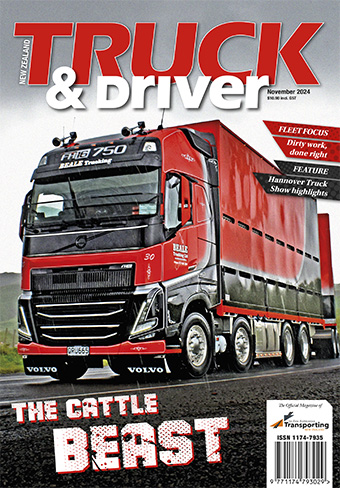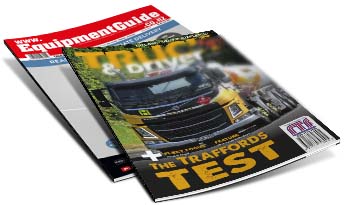Ia Ara Aotearoa Transporting New Zealand News


No simple solution to our environmental challenge
If you listened exclusively to a number of media commentators you would think that the solution to transport’s environmental challenges was as straightforward as putting all freight on the train and switching our heavy vehicle fleet from the diesel-driven combustion engine to emissions-free electric power.
“Unfortunately, it is just not that simple,” says Road Transport Forum Chief Executive Nick Leggett.
“Neither the requirements of the freight task nor currently available vehicle technology make a move away from diesel-powered road freight likely in the short-term.”
To put some context around it, New Zealand’s transport sector currently contributes around 20% of our total greenhouse gas emissions. Around 3.6 million tonnes or 25% of this comes from the freight sector.
Domestic freight in NZ, as in almost every other developed nation, is dominated by road freight.
...If you listened exclusively to a number of media commentators you would think that the solution to transport’s environmental challenges was as straightforward as putting all freight on the train and switching our heavy vehicle fleet from the diesel-driven combustion engine to emissions-free electric power.
“Unfortunately, it is just not that simple,” says Road Transport Forum Chief Executive Nick Leggett.
“Neither the requirements of the freight task nor currently available vehicle technology make a move away from diesel-powered road freight likely in the short-term.”
To put some context around it, New Zealand’s transport sector currently contributes around 20% of our total greenhouse gas emissions. Around 3.6 million tonnes or 25% of this comes from the freight sector.
Domestic freight in NZ, as in almost every other developed nation, is dominated by road freight.
“This is not because, as some like to suggest, we have a regulatory framework that promotes the road over other modes,” says Leggett.
“It is because, for the majority of the freight task and the majority of customer requirements, the road is the mode that most effectively and efficiently gets the job done.”
“That is not to say there isn’t a place for rail in our domestic freight network. However, it is critical that rail, like road or coastal shipping, is left alone to compete based on its natural market strengths and the service it provides to its customers.”
Rail is ideal for transporting large quantities of non-time-sensitive freight from a single source to a single destination. Coal from the West Coast’s Stockton Mine to Lyttelton is a great example of this. Timber and cement are other commodities that play to rail’s strengths when it comes to bulk freight.
Most other goods are just not suitable for rail and this is reflected in the fact that rail’s share of the freight market is less than 7%. A lot of freight is either too small in quantity, too diverse in origin and destination, or too time-sensitive to put it on the train.
“The problem is, politicians see rail as a panacea to a number of perceived problems,” says Leggett.
“Not only do they think that moving freight onto trains will reduce NZ’s emissions, but they also see it as an answer to both traffic congestion and this country’s poor road safety record.”
As economist David Greig noted in dispelling myths about rail in a BusinessDesk piece in late 2020, “one line is financially sustainable – Tauranga-Hamilton-Auckland – and cases can be made for the urban and West Coast lines. Many of the other lines do not even cover their operating and maintenance costs and rely on political rather than commercial arguments for support.”
“It is an inconvenient truth that NZ’s geography and low population means trucks are the most suitable for many freight tasks such as farm delivery, access to forests, urban freight and short hauls generally, and most regional freight,” he said.
So, if rail is not the answer to reducing emissions in the freight sector, what about electric vehicles or hydrogen?
Unfortunately, the reality is that current EV battery technology just isn’t suitable for road freight in NZ.
“The size and weight of the batteries needed to provide the power to drag HPMVs up and down our undulating terrain with anywhere near the range required just makes EVs impractical for anything but shorter metro-style runs,” says Leggett.
“Technology is, of course, constantly improving and there are things like inductive charging that could in the more distant future be incorporated into our roading infrastructure to assist EVs with the range issue, but that will require massive government investment.”
Also counting against EVs is their high upfront cost and growing concerns over the ecological impacts and exploitative labour practices associated with the mining of cobalt and lithium, two specialist metals critical to the production of EV batteries.
“Every technology has its price,” says Leggett: “The problems with the production of EVs doesn’t mean we should rule them out, but we must consider their downsides alongside their benefits.
“The current Government has placed a lot of hope in hydrogen fuel cells and while there are certain advantages they have over EVs, including vehicle range and quick fill-ups, there are also some fundamental problems, not the least being the infrastructure required, the storage issues and the massive amount of electricity needed to produce useable hydrogen in large quantities.”
All-in-all there are no easy solutions, Leggett says, but when it comes to making tangible improvements to transport’s emissions profile RTF believes the Government can do more to provide incentives to assist with the uptake of technology that already exists.
An accelerated depreciation scheme where capital investment costs in new trucks could be written off over one year would enable more trucking operators to purchase the most energy efficient Euro 6-engined trucks as an initial step toward reducing emissions. It would also allow trucking operators to explore the benefits of zero emission technology when that becomes available.
“It would also be prudent, in the wake of the Prime Minister’s recent announcement that the Government is to mandate a lower-emitting biofuel blend, that consideration is given to providing the transport sector with the necessary support to assist with this transition. While not emissions-free, biofuels have the advantage that they can be fed into existing vehicles with little modification,” says Leggett.
RTF is also quick to remind politicians that road transport has made massive strides in environmental performance over the last 20-30 years and that it is not the pariah it is often made out to be.
From 1990 to 2013 advances in heavy vehicle engine technology have seen an 88% reduction in CO2 (carbon dioxide) emissions, a 97% reduction in NOx (nitrogen oxides), a 98% reduction in particulate matter and a 95% reduction in hydrocarbons.
“Policymakers must recognise that NZ does not manufacture heavy trucks and our operators rely on global manufacturers to come up with vehicles that use alternative fuels or powertrains that are affordable, reliable and appropriate for NZ roads,” says Leggett.
“The Government must also refrain from the temptation to create a regulatory regime that sets out to disadvantage road transport, because to do so would have serious consequences for the domestic freight system and our export-led economy.”




 + EQUIPMENT GUIDE - FREE
+ EQUIPMENT GUIDE - FREE
